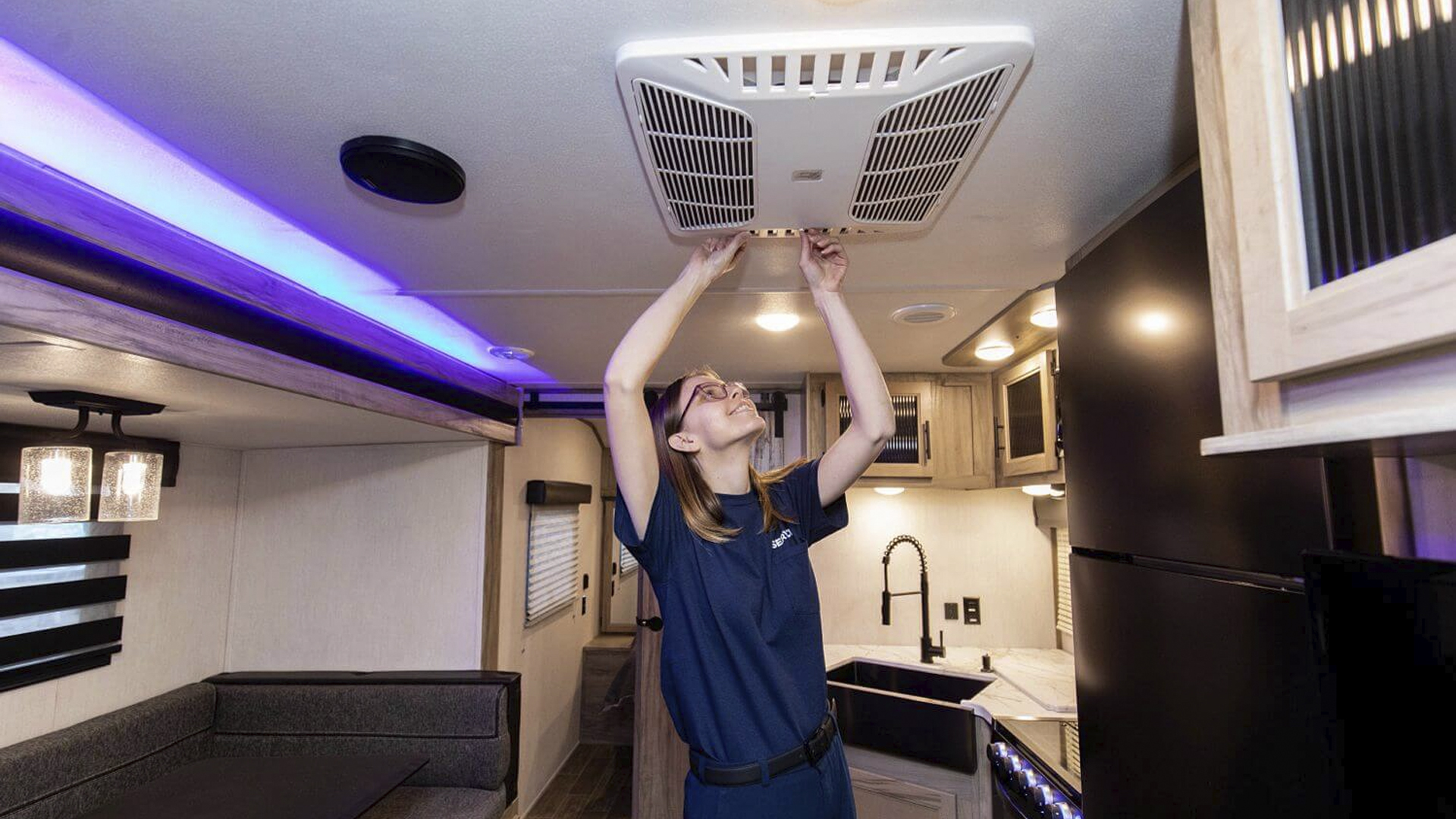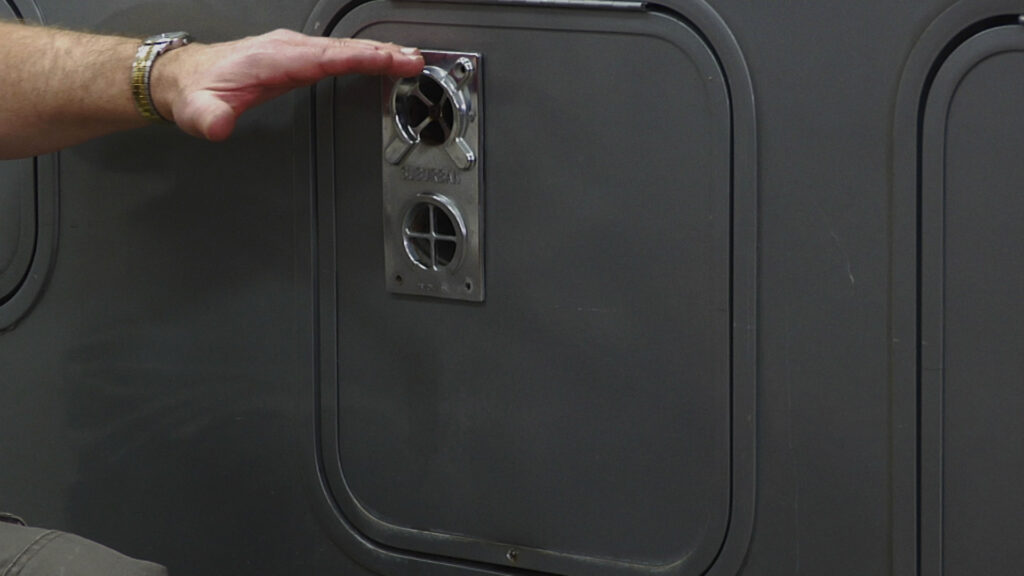
RV Heat Pump vs Furnace: A Complete Comparison
Table of contents
When you’re traveling in your RV, especially through varying climates, having a reliable heating system is essential for comfort. Whether you’re in the chilly mountains or the mild desert, your RV’s heating system can make or break your experience. One of the most common dilemmas RV owners face is choosing between an RV heat pump vs furnace. Both options have their unique strengths and drawbacks, making the decision a bit tricky. In this article, we’ll compare the two, covering the heat pump vs furnace debate, discussing the heat pump vs propane furnace and diving into the difference between furnace and heat pump. By the end, you’ll be well-equipped to choose the right system for your RV heating needs, based on your preferences, travel habits, and climate considerations.
Understanding RV Heat Pumps
How RV Heat Pumps Work
An RV heat pump operates by extracting heat from the outside air and transferring it into the RV. It works by circulating refrigerant through coils outside the RV, where the refrigerant absorbs heat from the ambient air, even when it’s relatively cool outside (though not when it’s freezing). This heat is then transferred inside the RV, providing warmth without the need for combustion.
An important feature of RV heat pumps is that they can also serve as cooling systems in hot weather, making them a dual-purpose appliance. Heat pumps are typically integrated with the RV’s air conditioning system, allowing them to function efficiently by utilizing electricity, typically from shore power or a generator.
Advantages of RV Heat Pumps
One of the most attractive advantages of an RV heat pump is its energy efficiency, particularly in mild climates. Since it works by moving heat rather than generating it through combustion, it uses less energy compared to traditional heating systems. This makes the heat pump vs furnace decision a no-brainer for RV owners who frequent campgrounds with reliable electrical hookups.
Additionally, heat pumps offer the convenience of dual functionality. They not only heat your RV but also provide cooling, which is a huge perk in areas where the temperature fluctuates. Their operation is clean and environmentally friendly, with no combustion or fuel emissions involved, unlike propane furnaces.
When you’re considering the heat pump vs propane furnace debate, keep in mind that a heat pump offers the potential for significant cost savings in terms of fuel. You won’t need to refill propane tanks, which can be a hassle when you’re on the road. Also, the maintenance of heat pumps is typically simpler, with fewer moving parts than furnaces.
Limitations of RV Heat Pumps
While heat pumps can be highly effective in moderate temperatures, they have their limitations. The heat pump vs furnace comparison becomes clearer in colder climates. Heat pumps begin to lose their efficiency as the temperature drops below 45°F. At these temperatures, they struggle to extract enough heat from the air, making them less effective. This is when the propane furnace vs heat pump argument comes into play—furnaces remain consistent in colder temperatures, providing reliable heat regardless of the outside conditions.
Another limitation of heat pumps is their reliance on electrical power. This means that they require either shore power or generator power to function, which may not always be available in remote areas. Their BTU output is typically lower than that of propane furnaces, making them less effective for heating larger RV spaces in very cold conditions.
Understanding RV Furnaces

How RV Furnaces Work
An RV propane furnace generates heat by burning propane, which is then circulated through the RV using a forced-air system. In the RV heat pump vs furnace debate, the furnace uses a blower to push warm air through ducts, ensuring that the entire RV is heated efficiently. Most RV furnaces are rated between 20,000 to 25,000 BTUs, which provides ample heat for small to medium-sized RVs. The forced-air system distributes the warmth evenly throughout the RV.
Unlike heat pumps, propane furnaces do not rely on the temperature outside to operate—they generate their own heat by combusting fuel, making them more reliable in extremely cold temperatures. Furnaces also tend to heat the RV faster than heat pumps because they don’t rely on external temperature conditions.
Advantages of RV Furnaces
One of the standout advantages of an RV furnace is its ability to function effectively in any temperature, even below freezing. This is one of the key differences between furnace and heat pump—furnaces are the clear winner when it comes to heating in very cold climates. Propane furnaces also don’t rely on shore power, making them an excellent choice for boondockers or those who travel to remote locations where electricity may not be available.
In terms of performance, propane furnaces tend to have a higher BTU output than heat pumps, meaning they can heat larger spaces more quickly. They are also highly reliable and can work continuously in extremely cold conditions, making them a good choice for winter travelers.
Limitations of RV Furnaces
While propane furnaces are powerful, they do have their downsides. For one, they burn propane, which means you will need to refill your propane tank regularly, depending on how often you use the furnace. Propane can also be more expensive than electricity, so the heat pump vs furnace debate can come down to energy costs.
Additionally, propane furnaces only provide heat and cannot cool the RV, unlike heat pumps. Furnaces can also produce more noise during operation, especially when the blower is running. Finally, regular maintenance is necessary to ensure the furnace runs safely and efficiently, as any combustion appliance can pose safety risks if not properly maintained.
Direct Comparison: Heat Pump vs Furnace
Energy Efficiency and Operating Costs
When comparing the heat pump vs furnace, energy efficiency and operating costs are crucial considerations. Heat pumps are more energy-efficient in mild temperatures since they don’t require fuel combustion. They operate using electricity, which can be cheaper depending on where you’re staying. On the other hand, propane furnaces can be more expensive to run due to the cost of propane, but they may be more cost-effective in extremely cold conditions, where heat pumps fail to perform.
In the propane furnace vs heat pump scenario, the cost of electricity and propane in your region will heavily influence your decision. If you’re in a location where electricity is cheap, a heat pump could be the better option. However, in areas where propane is easily accessible and affordable, a furnace might be a more economical choice for those who travel to colder regions frequently.
Performance in Different Climate Conditions
One of the most significant differences between furnace and heat pump is their performance in varying climate conditions. Heat pumps work best in moderate to mild temperatures and can be highly efficient in areas where the temperature rarely drops below 45°F. However, when temperatures plunge below freezing, heat pumps start losing their ability to heat your RV.
In contrast, propane furnaces provide consistent heating regardless of the outside temperature. Whether it’s 20°F or 70°F outside, your propane furnace will continue to keep your RV warm. This makes furnaces a better option for winter travel or for RV owners who frequently stay in colder climates.
Installation and Maintenance Considerations

When it comes to installation and maintenance, both systems have their considerations. Heat pumps generally require less maintenance than propane furnaces because they have fewer moving parts and don’t involve combustion. However, they require electrical connections, and installation might be more complex if your RV doesn’t have a built-in system.
Propane furnaces are generally easier to install in older RVs, as they only require a propane tank and some basic wiring. However, they require regular maintenance, including cleaning the burner, inspecting the blower, and checking for propane leaks. Furnace maintenance is crucial for safety, as any issues with combustion can lead to hazardous situations.
Hybrid Approaches: Using Both Systems Effectively
When to Use Each System
For RVers who encounter a variety of climates, using both a heat pump and a propane furnace can offer the best of both worlds. In mild weather, you can rely on the heat pump for energy efficiency and the convenience of dual heating and cooling. When temperatures drop below 45°F, you can switch to the propane furnace, ensuring reliable heat.
Zone Heating Strategies
You can also implement zone heating strategies by using both systems in different sections of your RV. For example, if you’re boondocking in a cooler climate, you can use the furnace to heat the living area while relying on the heat pump for less-demanding areas, like the bathroom or kitchen. This approach can optimize energy usage and keep your RV comfortable without wasting fuel or electricity.
Making the Right Choice for Your RV Lifestyle
Considerations Based on Travel Patterns
Choosing between a heat pump vs furnace often comes down to your travel patterns. If you’re a full-time RVer who enjoys traveling to colder regions, a propane furnace might be more reliable. For seasonal travelers who frequent campgrounds, a heat pump could offer the best balance of efficiency and comfort.
Budget Considerations: Initial vs. Operating Costs
The initial investment for either system can vary. Heat pumps tend to be more expensive to install, but they may save you money on energy costs in the long run. Propane furnaces may have a lower initial cost, but the ongoing cost of propane refills should be considered.
Ultimately, choosing between an RV heat pump vs furnace depends on your specific needs. Weighing factors like travel destinations, energy costs, and system maintenance will help you make the best decision for your RV lifestyle.
Maximize Your RV’s Heating Efficiency with Custom Skirting
Preparing for extreme weather on your RV travels? Don’t let the cold weather impact your comfort or heating efficiency! Enhance your RV with our Custom Skirting to protect, insulate, and reduce energy loss. Our “No-Snap, No-Gap” system seals out the cold, wind, and snow, ensuring that your heat pump or furnace operates at peak efficiency. With over a decade of testing and improvements, our custom skirting is the top choice for RVers tackling harsh winters. Ready to optimize your heating and adventure with confidence? Get Custom Skirting today and experience the difference!
